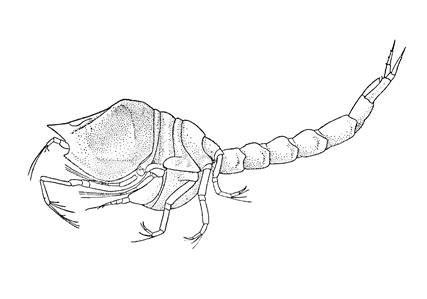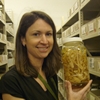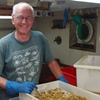General Description
Female and subadult male. Carapace deeply concave laterally. Pseudorostrum without carinae. Eyelobe without lenses. Pereopod 2 basis serrate, with few strong teeth distally. Telson shorter than uropod peduncles, lateral margins smooth, bearing 1 pair stout lateral setae and 1 pair stout terminal setae. Uropod endopod biarticulate, longer than exopod. Terminal setae of uropod rami simple. Adult male. Unknown.
Biology
Litogynodiastylis concava is named for the distinctive concave sides of the carapace. Cumaceans burrow into the surface of sandy and muddy sediments but can also be found in the sediment trapped among macroalgae. At night especially cumaceans can be active swimmers in the open water and this is probably where mating occurs. Females carry the eggs in a marsupium made from branches of the thoracic legs, making the front of the animal more swollen than normal. The eggs hatch as miniature adults.
Habitat
Soft bottom in silt and sand, at depths of 5-363 m.
Soft substrates
Distribution guide
Southern temperate oceans, including south-eastern Australia.
Species Group
Depth
Shallow (1-30 m)
Deep ( > 30 m)
Water Column
Max Size
2.5 mm
Diet
Organic matter
Commercial Species
No
Global Dispersal
Native to Australia
Species Code
MoV 59
Conservation Status
- DSE Advisory List : Not listed
- EPBC Act 1999 : Not listed
- IUCN Red List : Not listed






